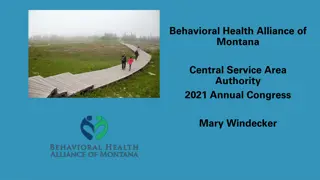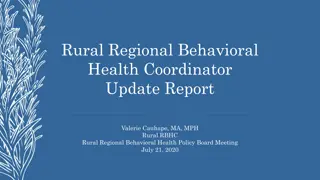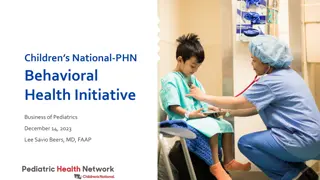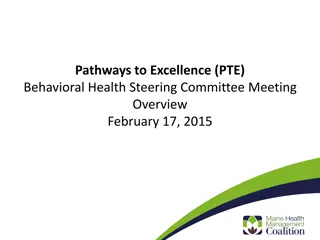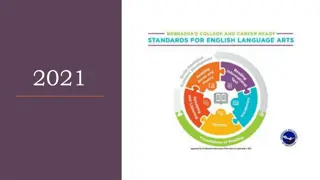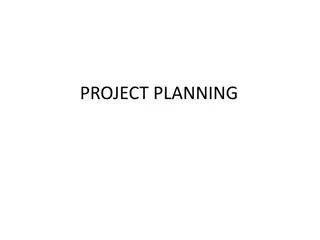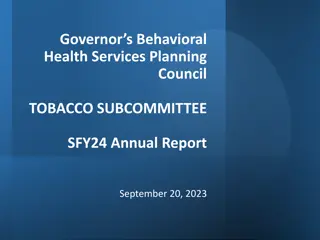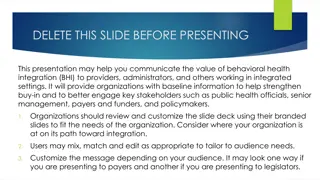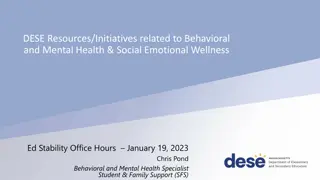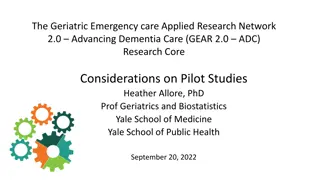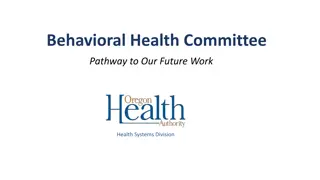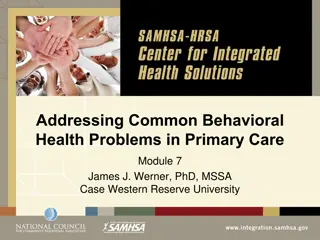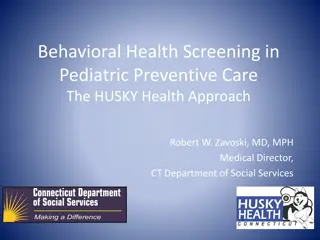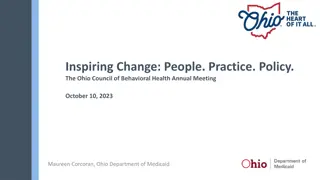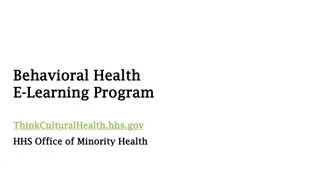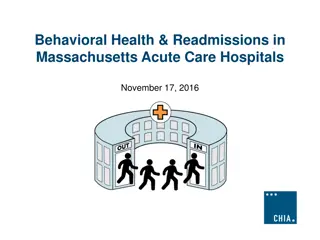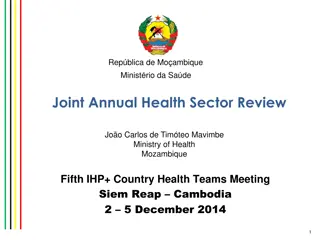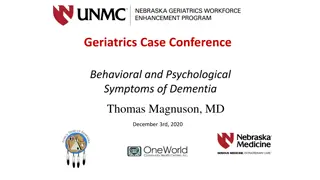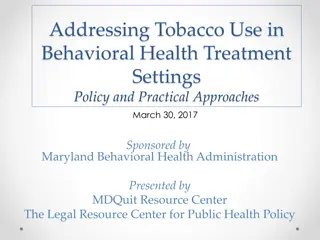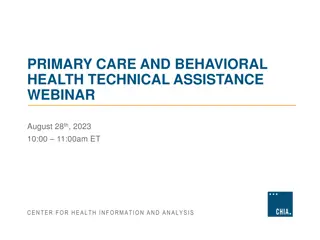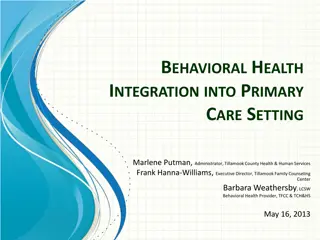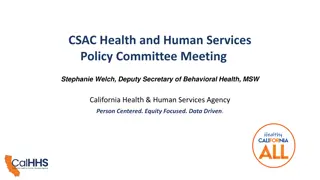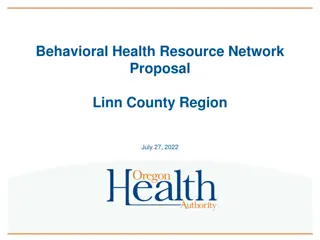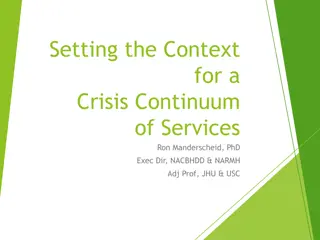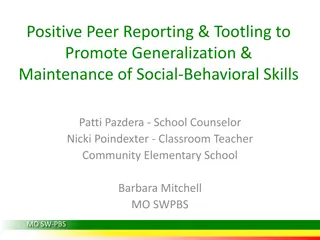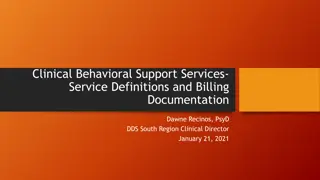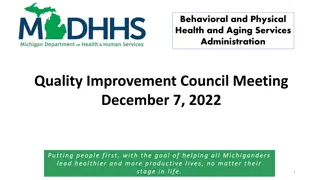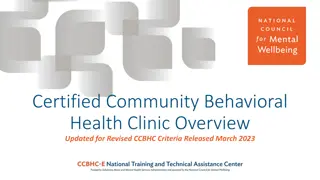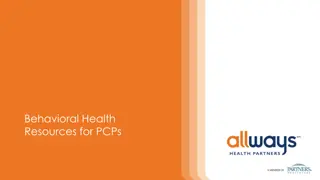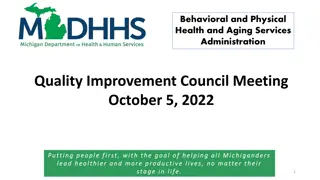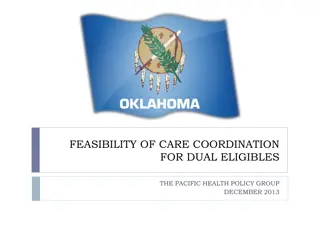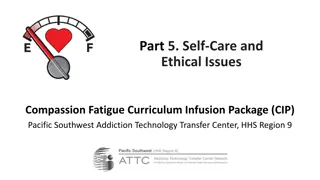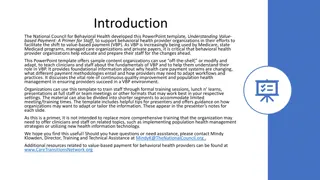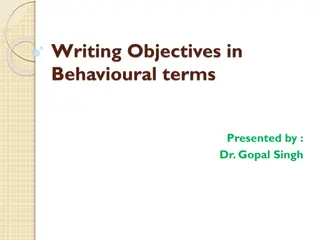Importance and Feasibility of Revised Implementation Strategies in Supporting Education Sector Behavioral Health
Implementation strategies play a crucial role in enhancing the adoption, implementation, and sustainability of clinical programs in the education sector. A comprehensive compilation of strategies is essential to improve mental health services access for underserved youth. The research emphasizes the importance and feasibility of tailored strategies such as assessing readiness, providing feedback, and developing tools for quality monitoring systems.
Download Presentation

Please find below an Image/Link to download the presentation.
The content on the website is provided AS IS for your information and personal use only. It may not be sold, licensed, or shared on other websites without obtaining consent from the author. Download presentation by click this link. If you encounter any issues during the download, it is possible that the publisher has removed the file from their server.
E N D
Presentation Transcript
Importance and Feasibility of a Revised Compilation of Implementation Strategies to Support Education Sector Behavioral Health Aaron R. Lyon, Ph.D.,1 Clayton R. Cook, Ph.D.,2 Jill Locke, Ph.D.,1 Chayna Davis, Ph.D.,1 Byron J. Powell, Ph.D.,3 & Thomas J. Waltz, Ph.D.4 1University of Washington, 2University of Minnesota, 3University of North Carolina, 4Eastern Michigan University SIRC 2017 Sept. 8, 2017
Overview 1. Implementation strategies ERIC Project 2. School context 3. ERIC strategy adaptation SISTER Project 4. Importance and feasibility survey 5. Results & discussion
Implementation strategies are central to implementation science An implementation strategy is a method or technique used to enhance the adoption, implementation, and sustainability of a clinical program or practice Proctor, Powell, & McMillen (2013), p.2
Concept Mapping of 73 Implementation Strategies (Waltz et al., 2015)
Concept Mapping of 73 Implementation Strategies (Waltz et al., 2015) #4: Assess for readiness and identify barriers and facilitators #71: Use train-the-trainer strategies #9: Change accreditation or membership requirements
ERIC strategies with highest importance & feasibility Strategy Importance Feasibility Assess readiness and identify barriers and facilitators Audi and provide feedback Purposefully reexamine the implementation Tailor strategies Develop and implement tools for quality monitoring Develop and organize quality monitoring systems 4.60 4.57 4.40 4.40 4.37 4.13 4.03 4.00 4.37 3.63 4.37 3.63 Waltz et al. (2015)
Schools improve MH service access Most youth who require mental health services do not receive them(Kataoka et al., 2002) School mental health (SMH) accounts for >70% of all MH services (Burns et al., 1995; Farmer et al., 2003) About 20% of all students receive SMH services annually (Foster et al. 2005) Schools improve service access for underserved youth (Kataoka et al., 2007; Lyon et al., 2013)
Schools improve MH service access care Lyon et al. (2013)
The quality of SMH services can be substantially improved SMH services are unlikely to be evidence-based (Evans & Weist, 2004; Rones & Hoagwood, 2000) Meta-analysis of some SMH programs reveal low levels of effectiveness, some iatrogenic effects (Farahmand et al., 2011) Effective, contextually-appropriate implementation strategies are needed in schools
The quality of SMH services can be substantially improved Unique aspects of school context may require adaptation of strategies Educational timelines, prof. characteristics, policies, and organizational constraints (Forman et al., 2013; Owens et al., 2014) Critical to evaluate adapted strategies from perspective of field-based experts (i.e., champions and intermediaries) Help prioritize strategies that might have the most utility in school context
School Implementation Strategies, Translating ERIC Resources (SISTER) Project Aims: 1. Adapt ERIC strategies for use in SMH 2. Assess the importance and feasibility of the adapted strategies in schools Identify strategies with largest ERIC SISTER change E.R.I.C. S.I.S.T.E.R.
Aim 1: Adapt implementation strategies to schools ERIC strategies iteratively adapted by experts (n = 5) in school mental health and implementation science Included two developers from original ERIC work
Aim 1: Adapt implementation strategies to schools 1. Revise ERIC language, terms, & constructs 2. Modify examples to reflect school context 3. Remove contextually irrelevant / inappropriate strategies 4. Add novel strategies for schools 5. Review / feedback from ERIC developers 6. Revise based on feedback to ensure conceptual consistency 7. Re-review by ERIC developers and finalization
Aim 1: Adapt implementation strategies to schools No Change 11 strategies Surface Change 51 strategies Deep Change 6 strategies Strategies Deleted 5 strategies Strategies Added 7 strategies (n = 75 strategies)
Aim 1: Adapt implementation strategies to schools Example - Surface changes SISTER Change Surface Detail Adapted terminology coalition is not common term ERIC Original Strategy Build a coalition Recruit and cultivate relationships with partners in the implementation effort. Build partnerships (i.e., coalitions) to support implementation Recruit and cultivate relationships with partners external and/or internal to the school who help facilitate the implementation effort. Conduct educational meetings with specific stakeholders Hold meetings targeted toward different stakeholder groups (e.g., teachers, principals, central administrators, other organizational stakeholders, and community, and family stakeholders) to teach them about the new practices. Conduct educational meetings Hold meetings targeted toward different stakeholder groups (e.g., providers, administrators, other organizational stakeholders, and community, patient/consumer, and family stakeholders) to teach them about the clinical innovation. Surface Adapted referents providers, patients not used
Aim 1: Adapt implementation strategies to schools Example Deep changes SISTER Change Detail ERIC Original Strategy Assess for readiness and identify barriers and facilitators Assess various aspects of an organization to determine its degree of readiness to implement, barriers that may impede implementation and strengths that can be used in the implementation effort. Assess for readiness and identify barriers and facilitators Assess various aspects of the school context to determine the degree to which it and the school personnel within it are ready to implement, barriers that may impede implementation, and strengths or facilitators (such as, coaches, professional learning communities, whole staff training) that can be used/leveraged in the implementation effort. Deep Adapted terminology and added additional substance to expand Develop disincentives Provide disincentives (e.g., write up in professional file, meeting with the administrator to discuss insufficient implementation, participation in additional professional development) for failure to implement or use the new practices. Develop disincentives Provide financial disincentives for failure to implement or use the clinical innovations. Deep Adapted reference to financial disincentives to reflect non-financial disincentives in school context.
Aim 1: Adapt implementation strategies to schools Example Additions SISTER Change Detail ERIC Original Strategy NA Develop local policy that supports implementation Develop local school system policy that establishes rules, expectations, and guidelines for implementation of new practices. Addition Added based on literature indicating the importance of policy-practice alignment to support implementation. Improve implementers buy-In Engage school personnel in activities or discussions that attempt to increase their buy-in and motivation to adopt and use the new practice. NA Addition Added to capture research linking improvements in provider buy-in (e.g., beliefs, intentions) to implementation.
Aim 2: Assess Importance & Feasibility Survey: 75 adapted strategies with auxiliary materials 5-point rating scales for importance and feasibility (Waltz et al., 2015) Distributed to a network of school-based behavioral health consultants (i.e., intermediaries) in California Reminder emails sent to improve response Analyses: Descriptive statistics, Euclidean distance between ERIC & SISTER
Aim 2: Assess Importance & Feasibility Results n = 198 respondents Most important strategies: Strategy Mean 4.59 4.46 SD 0.60 0.73 Conduct ongoing training Make training dynamic Provide ongoing consultation / coaching Monitor the progress of the implementation effort Improve implementers buy-in 4.46 0.65 4.38 0.73 4.38 0.70
Aim 2: Assess Importance & Feasibility Results Feasibility generally lower than in ERIC project Most feasible strategies Strategy Mean 3.72 3.60 3.44 3.42 SD 0.98 0.92 0.90 0.84 Make training dynamic Distribute educational materials Facilitation / problem solving Capture and share local knowledge
Aim 2: Assess Importance & Feasibility #44. Make training dynamic educational materials ongoing training SISTER? Go-Zone? Plot #31. Distribute #18. Conduct 3.75 44 31 3.5 6 62 33 46 14 73 18 25 32 36 27 74 42 48 47 3.25 17 5 3 40 54 19 66 22 56 28 23 35 30 Feasibility 4 75 15 12 43 3 39 57 24 52 7 50 68 63 67 16 37 53 13 64 55 20 58 61 49 51 38 2.75 69 65 70 59 10 41 45 72 2 71 29 2.5 9 26 60 1 8 34 2.25 #8. Change accreditation or membership requirements community sites 11 21 #11. Change school or 2 2.6 2.85 3.1 3.35 3.6 Importance 3.85 4.1 4.35 4.6 21. Create or change credentialing and/or professional development standards
Aim 2: Assess Importance & Feasibility Results Largest Euclidean Distances (ED) between ERIC and SISTER Strategy ED Change liability laws (ERIC) / Change ethical and professional standards of conduct (SISTER) Make billing easier (ERIC) / Make implementation easier by removing burdensome documentation tasks (SISTER) Change physical structure and equipment (ERIC) / Change or alter environment (SISTER) Develop educational materials (ERIC / SISTER) 1.83 1.68 1.59 1.58 Stage implementation scale-up (ERIC / SISTER) 1.45
Summary Most strategies only required surface changes to be relevant to school context Linear relationship between importance and feasibility in schools About 1/3 of strategies shifted quadrant (i.e., Go-Zone) from ERIC SISTER Biggest positive changes were for strategies that were altered more substantially for the school context
Translation / Imp. Practice Implications 1. Methods / frameworks for adapting widely accepted implementation strategies extend the utility of this knowledge to other service sectors and can improve their contextual appropriateness 2. A menu of context-specific implementation strategies provides a foundation for developing bundled implementation interventions in schools
Translation / Imp Practice Implications 3. Large-scale implementation initiatives in (e.g., in schools: Project AWARE) may consider policies requiring grantees to build implementation plans composed of contextually- adapted strategies 4. Intermediaries and local champions may prioritize strategies receiving the highest importance AND feasibility
Limitations Focused on education sector, so unclear if the same number / type of adaptations would be necessary for other sectors (e.g., juvenile justice) SISTER project only included one type of school-based stakeholder in one state ERIC included different stakeholders (researchers & VA clinical managers)
https://education.uw.edu/smart lyona@uw.edu @Aaron_Lyon


